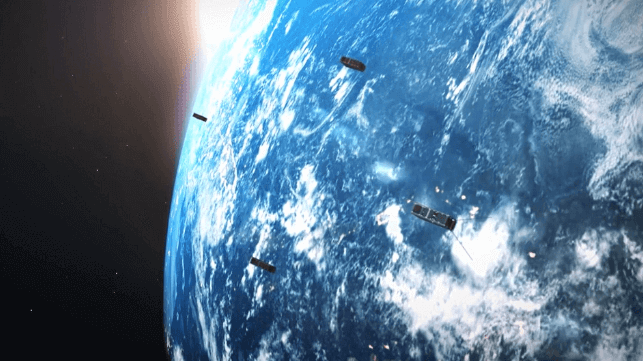
NEWS
U.S. Navy Tests Out RF Emission Ship Tracking Using Satellite Data

The U.S. Navy has partnered with a startup micro-satellite operator on a project to track ship movements from space - using their radio-frequency emissions.
Commercial ship-tracking services rely upon satellite collection of AIS transciever signals, which can be received from space (with some limitations). However, AIS is easily manipulated: the equipment aboard the ship can be tampered with to display a false location, name, MMSI, flag registry and other identifiers. The techniques used for AIS spoofing and falsification grow more sophisticated all the time. More commonly, a suspect vessel simply "goes dark" by turning off its AIS transciever.
Military services routinely use radio-frequency emissions surveillance to track and identify targets of interest, and a new startup is applying this technique to the problem of ship-tracking. With the help of D.C.-based startup Kleos Space, Naval Surface Warfare Center Division Crane is studying ways to use RF geolocation data to improve maritime domain awareness for national security missions. This could include sanctions enforcement, transshipment monitoring, SAR, fisheries management and border control, among other tasks.
"Kleos’ data improves the ability to detect and monitor suspect vessels across wider areas and over longer detection intervals. Our RF data greatly expands the search range, access, and volume to reach the vast maritime domain," said Kleos chief revenue officer Eric von Eckartsberg in a statement.
The partnership is part of the Office of Naval Research's SCOUT campaign, a series of experiments centered on new solutions for the counternarcotics campaign in the Caribbean and Eastern Pacific.
Kleos' satellites offer the Navy something more than just the contents of RF signals from shipping. Its constellation orbits the globe in "clusters" of four satellites. This means that each cluster of four can triangulate the position of a received signal, yielding accurate RF geolocation data. If a vessel turns off its AIS transciever - or simply does not have one, like a smuggling vessel or small fishing vessel - it could still be found by its other RF transmissions.
Source of the materials:



